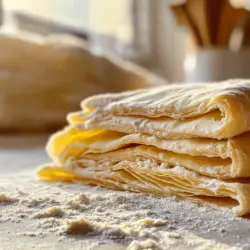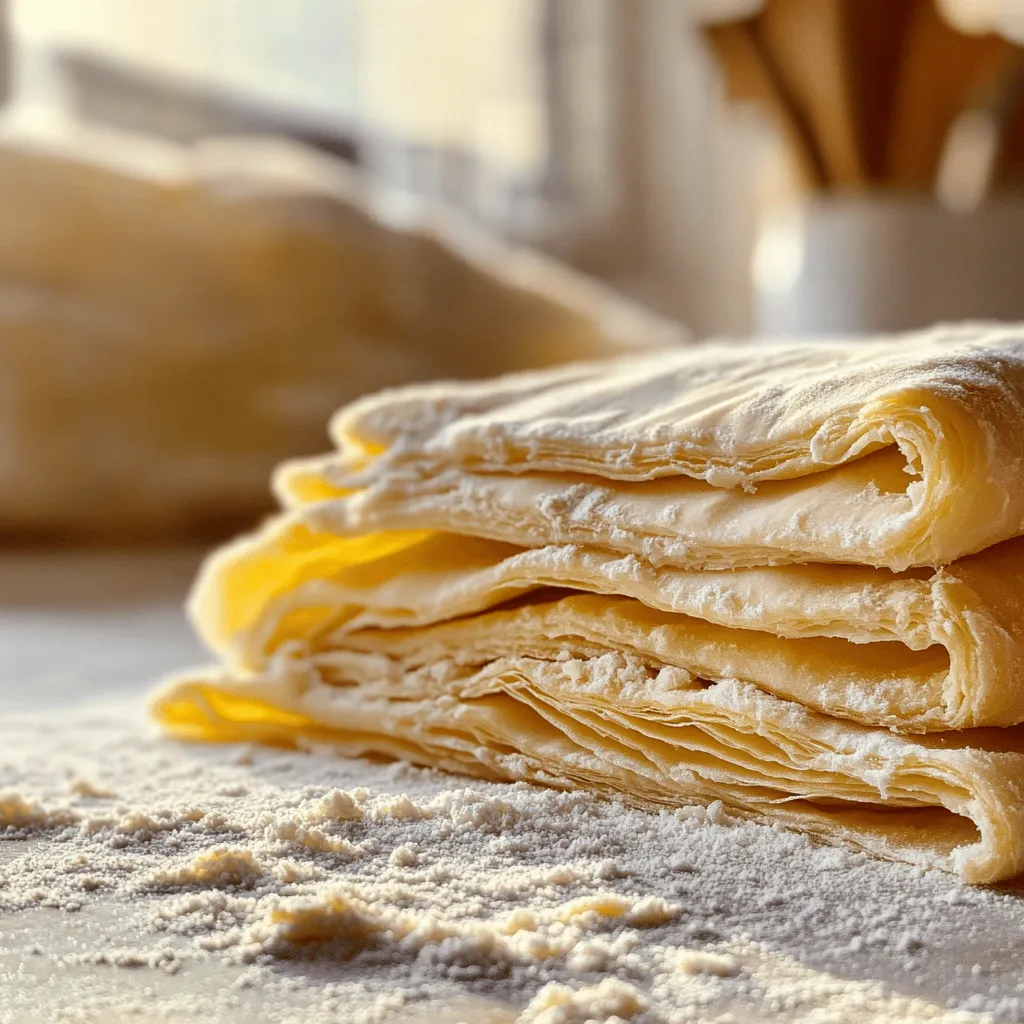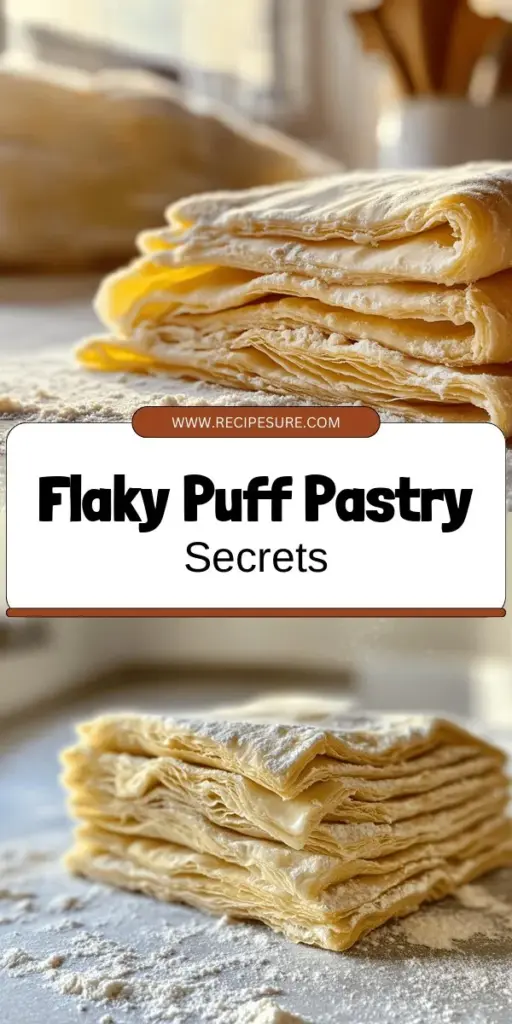Puff pastry dough can seem tricky, but with the right tips, you can master it. This flaky treat adds a delightful touch to any dish. I’ll share essential ingredients, a step-by-step guide for making dough from scratch, and expert techniques to keep it flaky. Plus, learn how to store and freeze your pastry effectively. Let’s dive into the secrets that will transform your baking!
What are the essential ingredients for puff pastry dough?
To make puff pastry dough, you need key ingredients. Each plays an important role in creating that flaky texture.
First, let’s talk about all-purpose flour. This flour is a must-have. It has the right protein content to create gluten. Gluten gives the dough strength and structure. When you mix it with water, it forms a network that holds air. This air expands when baked, creating those lovely layers. You need about 2 cups of all-purpose flour for a good batch.
Next, we have butter. Butter is crucial for flavor and texture. Use unsalted butter, so you can control the saltiness. Cold butter helps create flaky layers. When you cut it into the flour, it forms small pieces. These pieces melt during baking, creating steam that lifts the dough. You want about 1 cup, cubed and cold, for the perfect result.
Now, let’s discuss ice water. Ice water is key to keeping everything cold. A cold dough helps keep the butter from melting too fast. This keeps those flaky layers intact. You will need about 1/2 cup of ice water. Adding a bit of lemon juice can help too! It gives the dough a nice rise and extra fluffiness.
With these three main puff pastry dough ingredients, you can create a perfect base for many treats.
How do you make puff pastry from scratch?
To make puff pastry from scratch, start with the right ingredients. You need flour, salt, cold butter, ice water, and lemon juice. These create a rich, flaky dough.
What are the step-by-step instructions for making the dough?
First, mix flour and salt in a bowl. Then, add cold butter. Work it in until it looks like crumbs. Next, mix ice water and lemon juice. Slowly add this to the flour mix. Stir until it comes together. Turn it out on a floured surface and knead gently. Divide the dough in half, flatten it, and wrap each piece. Chill for at least 30 minutes. After chilling, roll one disk into a rectangle. Fold it in thirds like a letter. Wrap it again and chill for another 30 minutes. Repeat with the second disk.
How do folding and chilling create flaky layers?
Folding and chilling help create layers in the dough. Each fold traps air and layers of butter. When you bake the dough, the water in the butter turns to steam. This steam pushes the layers apart, making them rise. This is how you get the light, flaky texture.
What common mistakes should you avoid during the process?
Avoid overworking the dough. This can make it tough. Use cold ingredients; warmth can melt the butter. Be careful not to skip chilling times. Chilling firms up the butter, helping create layers. Lastly, don’t roll the dough too thin. A thicker dough will puff better during baking.
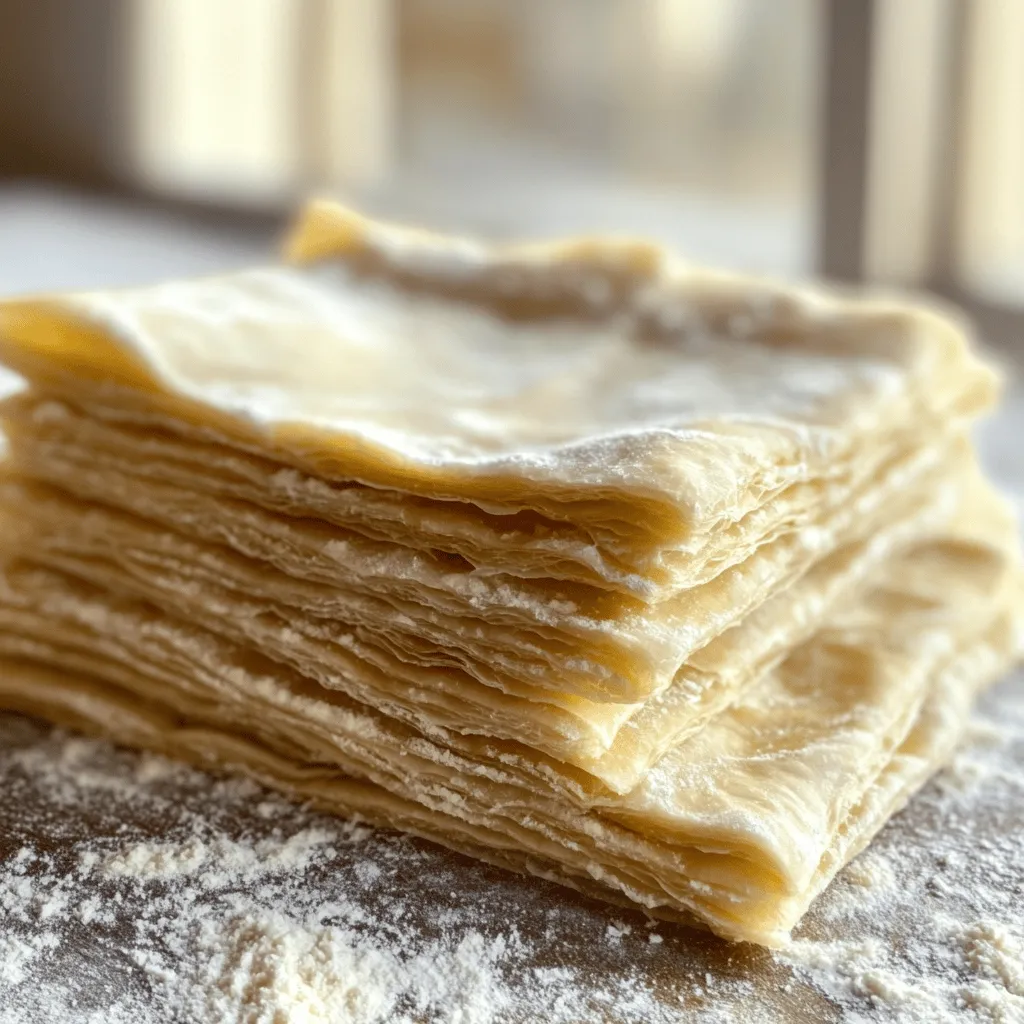
What are the best tips for working with puff pastry dough?
To make great puff pastry, start with cold ingredients. Keep your butter and water chilled. This helps the layers stay separate, which makes them flaky. When you mix the butter with flour, leave some pieces of butter whole. This creates pockets that puff up when baked.
Next, don’t skip the chilling times. After you roll and fold the dough, chill it. This firms up the butter and improves the texture. I recommend chilling it for at least 30 minutes. You can even chill it longer for better results.
When rolling out the dough, use a light touch. Dust your surface and rolling pin with flour. Roll from the center outwards. If the dough sticks, add more flour. Avoid pressing too hard; you want to keep those layers intact.
Finally, monitor your oven temperature. Preheat it well before baking. A hot oven helps create steam, which makes the dough rise. Bake until golden brown for the best look and taste.
What storage and freezing options are available for puff pastry dough?
To keep puff pastry dough fresh, store it in the fridge. Wrap it tightly in plastic wrap. This helps keep out air and moisture. Use the dough within three days for the best taste and texture.
For long-term storage, freezing puff pastry dough works well. First, wrap the dough in plastic wrap. Then, place it in a freezer bag. Squeeze out as much air as possible before sealing. You can freeze it for up to three months without losing quality.
When you are ready to use frozen dough, thaw it in the fridge overnight. This keeps the dough cold and easy to work with. Don’t rush the thawing process. A slow thaw helps maintain the layers that create those flaky treats.
You can also prep puff pastry dough ahead of time. Making it in bulk saves time on busy days. Just remember to label your wrapped dough with the date. This way, you know how long it has been stored.Follow the steps carefully, and enjoy your delicious creations!
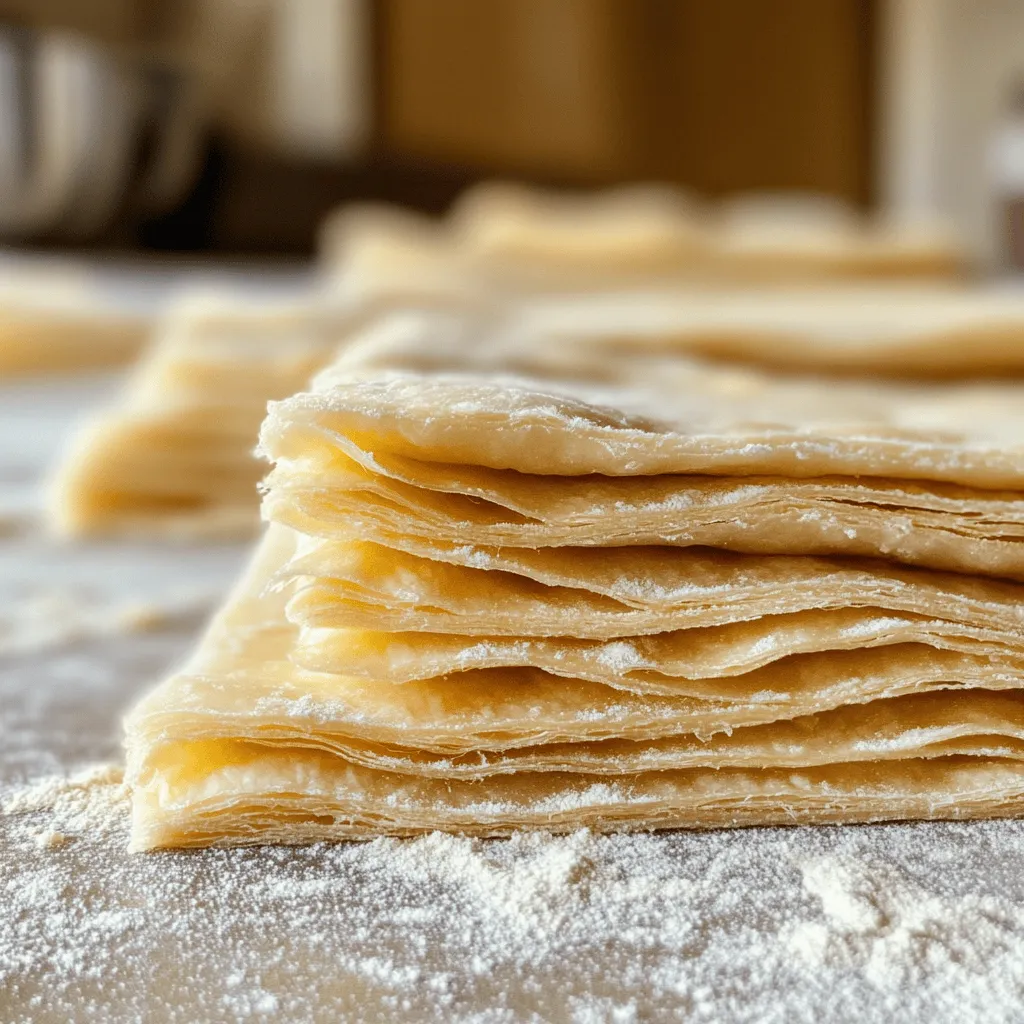
What are some delicious ways to use puff pastry dough?
Puff pastry is a versatile dough that can create many tasty dishes. You can make savory meals, sweet treats, and even snacks.
What popular savory dishes can be made with puff pastry?
Savory puff pastry recipes shine in various dishes. You can make chicken pot pie, which is warm and comforting. Fill a puff pastry shell with cooked chicken, veggies, and a creamy sauce. Bake it until golden brown. Another great dish is puff pastry tarts. Top them with cheese, spinach, or mushrooms. They make a perfect appetizer. You can also try making sausage rolls. Simply wrap sausage meat in the dough, cut them, and bake until crispy.
How can puff pastry be utilized in desserts?
Sweet puff pastry desserts are a delight. You can create classic fruit turnovers. Just fill the dough with fruits like apples or berries and bake. They puff up nicely and become golden. Another option is a chocolate croissant. Roll chocolate inside the dough, shape it, and bake. The result is a flaky, sweet treat that everyone loves. You can also make palmiers. Roll the dough with sugar, slice, and bake until crispy.
What are creative uses for leftover puff pastry?
If you have leftover puff pastry, don’t waste it! You can cut it into shapes and bake them for snacks. Top with cheese and herbs for a quick bite. Another idea is to make mini quiches. Use muffin tins, fill with egg and veggies, and bake. You can also layer it with jam or Nutella for a sweet treat. Lastly, use it to make decorative tops for soups. It adds a fun twist to any meal.
Puff pastry is a canvas for your culinary creativity. Explore these best uses for puff pastry and enjoy making delicious meals.
How do different dietary preferences affect puff pastry choice?
When it comes to puff pastry, dietary needs matter. For those who follow a vegan diet, traditional puff pastry won’t do. The key ingredient, butter, is not plant-based. You can make vegan puff pastry by using solid coconut oil or vegan butter. These options can create a similar flaky texture. Be sure to chill your fat, just like you would with regular butter.
If you need gluten-free puff pastry, the process gets a bit tricky. You can use gluten-free all-purpose flour as a base. However, the lack of gluten may affect the texture and rise. Adding a mix of cold butter and chilled water helps mimic the traditional recipe. Another tip is to use a gluten-free xanthan gum or psyllium husk to improve structure.
Now let’s talk about homemade versus store-bought puff pastry. Homemade offers control over ingredients, which is great for dietary needs. It’s fresher, and you can customize it to your taste. However, it requires time and practice. Store-bought options are quick and easy, perfect for busy cooks. But always check labels for additives if you have dietary concerns.You’ll enjoy the process and the taste!
Puff pastry is a fun and rewarding treat to make at home. We talked about key ingredients like flour and butter, and how ice water helps form the dough. Then, I shared easy steps to create layers through folding and chilling. Remember to keep your dough cold and avoid common mistakes.
Lastly, whether savory or sweet, puff pastry can delight any plate. With storage tips, you can prep ahead and use leftovers creatively. With these insights, you’ll be ready to make magic happen with puff pastry.
